We have found the best-preserved pair of skis from prehistory! Back in 2014, the Secrets of the Ice programme found an exceptional pre-Viking ski, 1300 years old, at the Digervarden Ice Patch in Norway. The ski was complete, including the binding – one of only two skis from prehistory in this condition. Ever since, we have monitored the ice patch, hoping and praying for the second ski of the pair to melt out. Now it has happened! The new ski is even better preserved than the first one! It is an unbelievable find.
The New Discovery
It has been seven years since the discovery of the first ski at the Digervarden ice patch. We have patiently monitored the melt of the ice patch, in case the second ski of the pair should melt out. We went back in 2016 for a general survey of the ice patch, but the ice had not retreated much at that time. This year, we could see on satellite imagery that the ice patch had retreated compared to 2014. We decided to send out an archaeologist to check it.
The field check at Digervarden happened last Monday (September 20), so this is all very fresh news. We got an excited report back. Archaeologist Runar Hole and his tour companion Bjørn Hessen found a second ski near the spot where the first one was discovered – only five metres apart. However, the ski was still firmly stuck in the ice and they did not have the equipment to free it in a safe way. They had to leave it behind.
Then a storm descended on our high mountains before we were able to return with proper equipment and a larger team. Along with it came snowfall – just what we had wanted to avoid. We could do nothing but wait and hope that the snowfall had not buried the ski beyond our reach. Conducting fieldwork in the high mountains in late September is a marginal business.
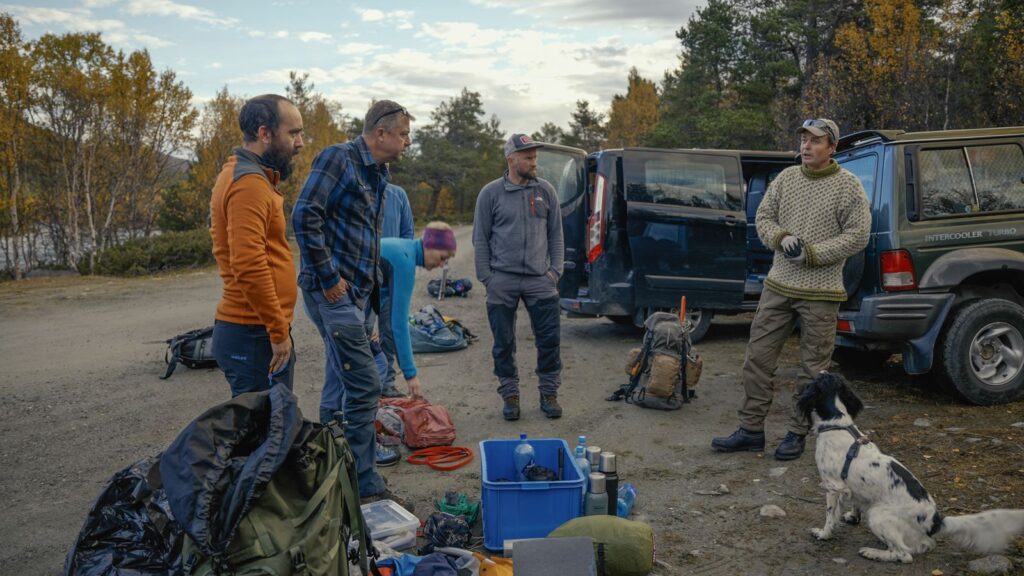
The Rescue Expedition
Sunday (September 26), six days later, was the first good-weather window. We sent out a large team, well equipped with ice axes, gas cookers and packing materials. The objective was to free the ski from the ice and transport it down from Mount Digervarden in a secure way.
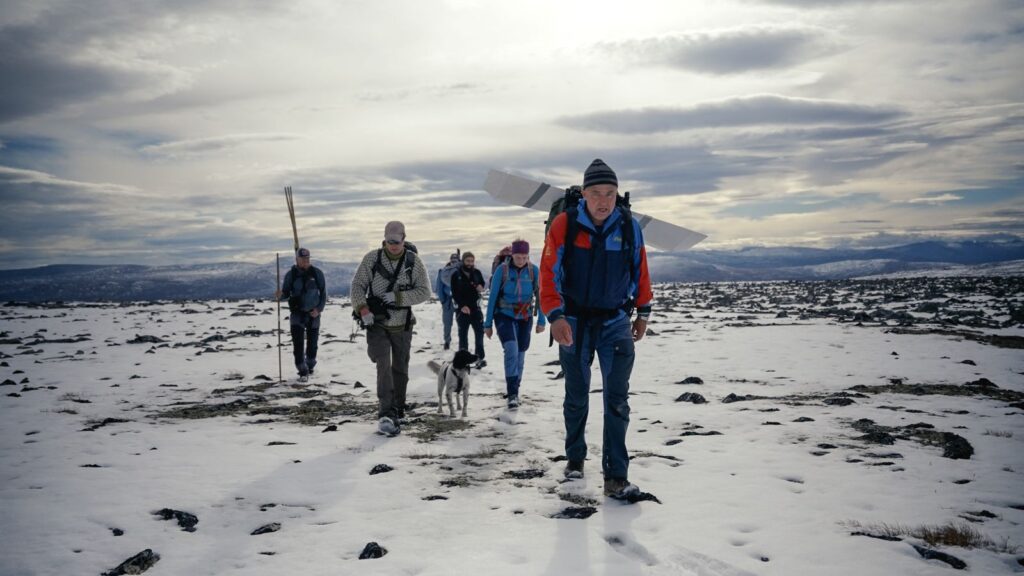
It was a difficult three-hour hike up to the find spot due to the snowfall. Hiking across snow-covered scree is difficult at the best of times. When the team finally arrived, they found about 30 centimetres of new snow on the ice patch. Luckily, it was still possible to locate the find spot using the GPS position and photos taken on the previous visit.
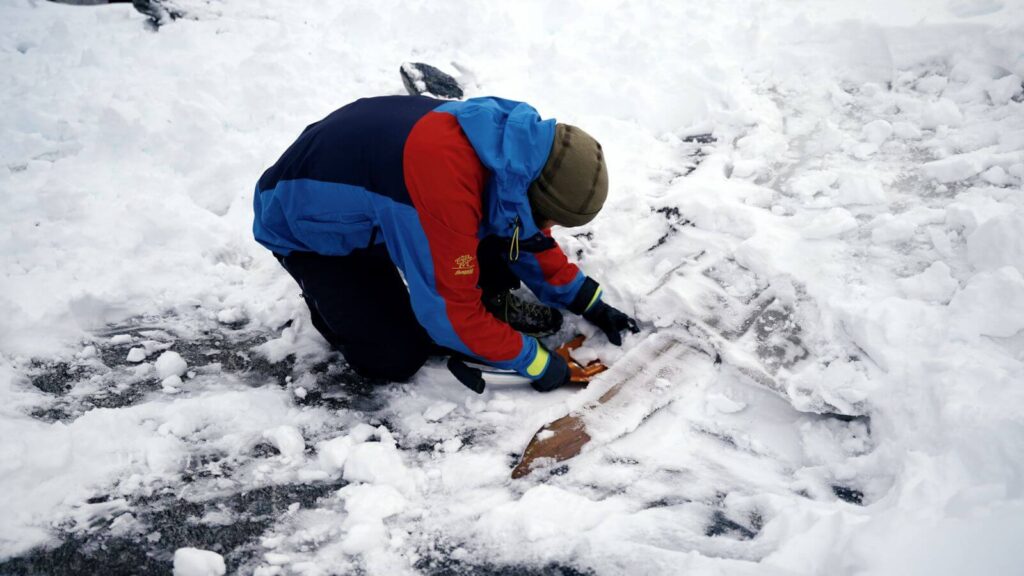
Espen Finstad (co-director of Secrets of the Ice) and Julian Post-Melbye (Museum of Cultural History) used a snow shovel to clear the snow. Soon, the front end of the ski appeared but so did the ice. The ice still held an iron grip on the back of the ski.
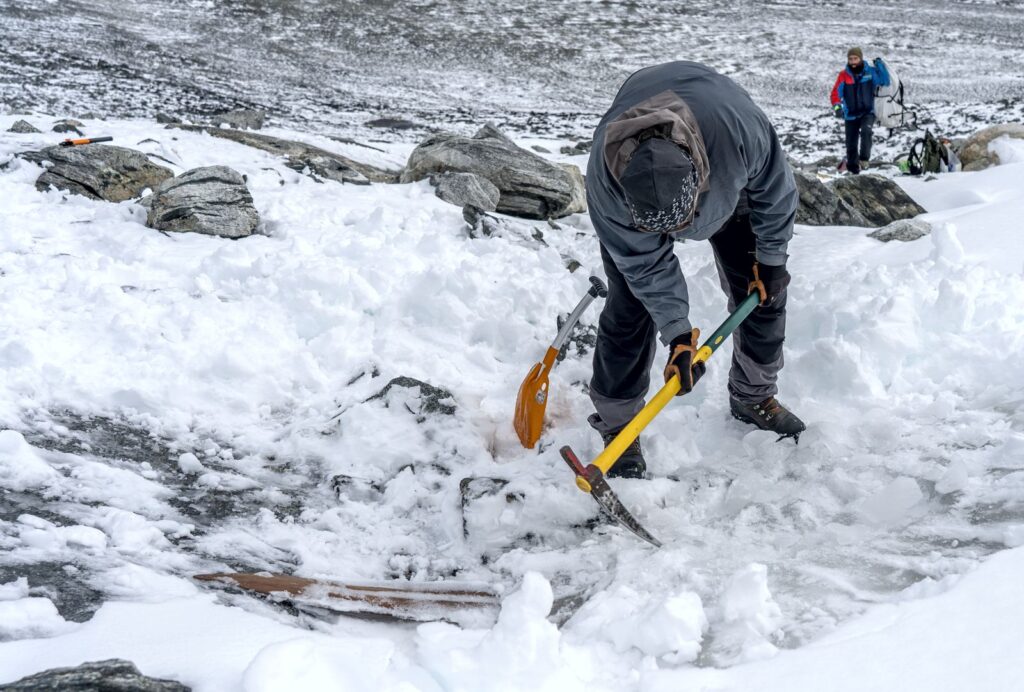
Dag Inge Bakke brought forward an ice axe and started chipping away at the ice. He used the ice axe with great care to avoid damage to the ski below. Piece by piece, Julian and Dag Inge removed the ice covering the ski until the whole length of the ski was visible.
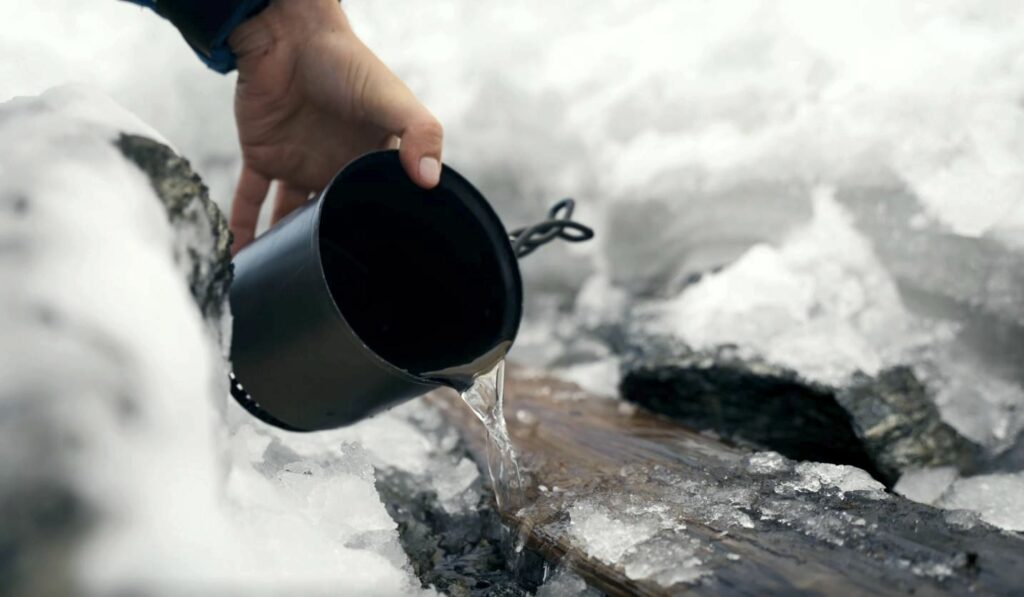
The final step was to melt the ice below the ski to release its grip. The team warmed water on gas cookers and poured lukewarm water onto the ice and the ski. Slowly, the grip loosened.
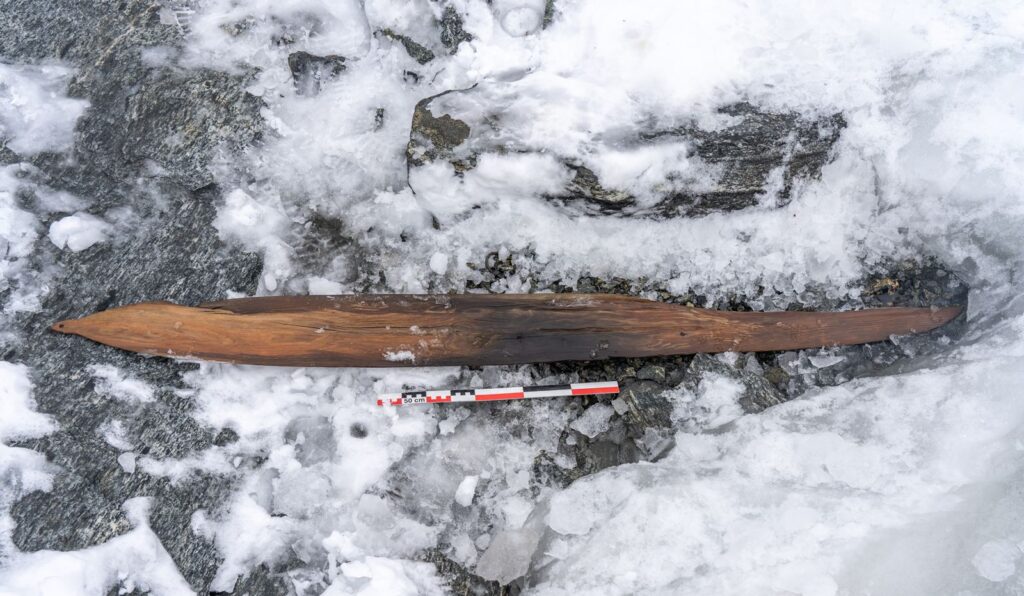
The ski lay with the underside up. Espen and Julian lifted it carefully from the ice. The moment of truth came when they turned the ski around and the binding appeared. It was the same type of binding as on the ski found in 2014. The skis are a pair, lost together 1300 years ago!
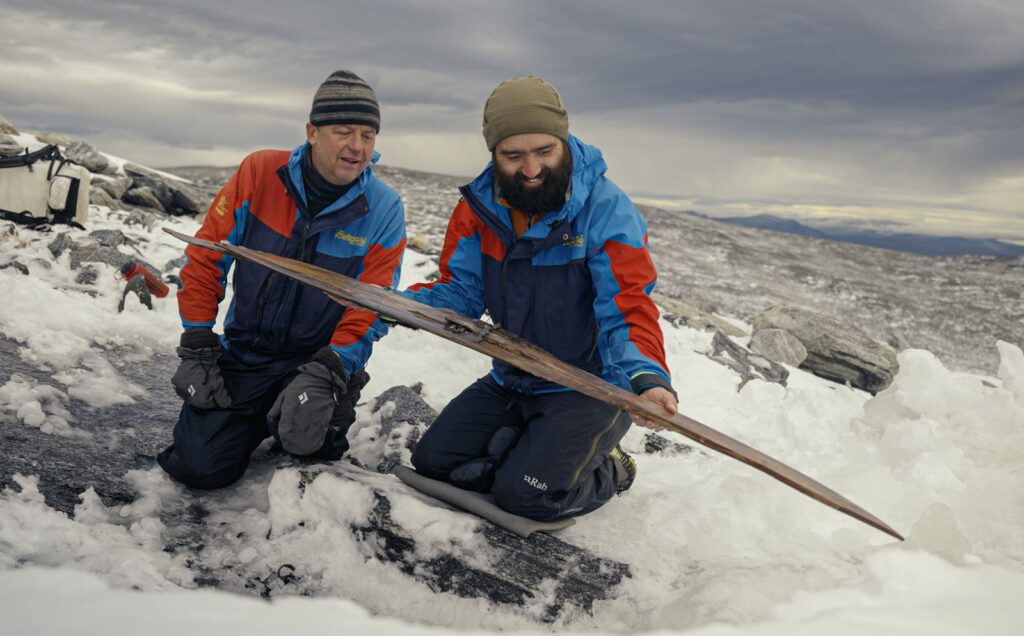
The team packed the ski carefully. The focus now was to get back down safely from the mountain before dark. It was a long return hike. The crew members were both tired and hyped when they reached the parked cars at dusk. Job well done!
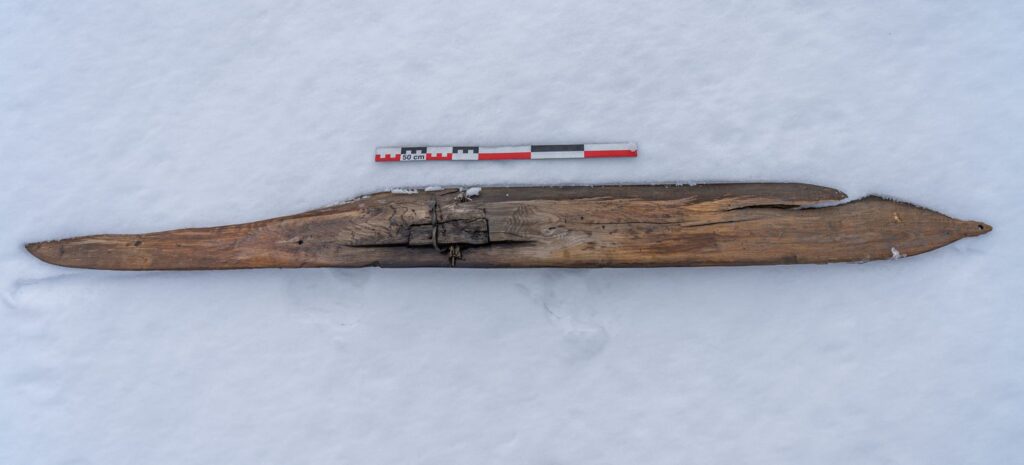
The New Digervarden Ski
The new ski is of the same type as the first ski found here. It is broad, with a raised foothold and with the binding still preserved, just like the one found in 2014. The new ski is 187 centimetres long and 17 centimetres wide. This is 17 centimetres longer and 2 centimetres wider than the first ski found here. The preservation of the new ski is much better, probably because it was 4-5 metres further into the ice. That may account for some of the differences in dimensions between the two skis.
Three twisted birch bindings, a leather strap and a wooden plug go through the hole in the foothold of the new ski. The ski found in 2014 only had one twisted birch binding and a leather strap through the hole. Both skis have a hole through the tip. There are subtle differences in the carvings at the front of the skis. The back end of the new ski is pointed, while the back end of the 2014 ski is straight.
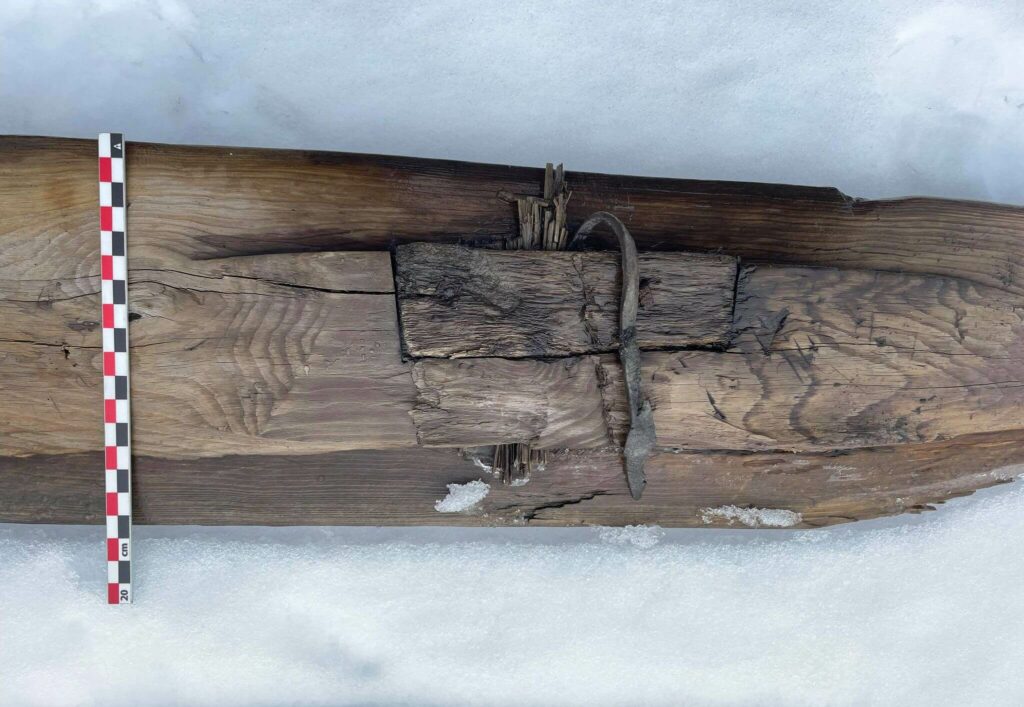
The foothold of the new ski shows repairs, so it was well used. A part of the back end of the ski is missing. The missing piece is presumably still inside the ice. Whether it broke when it was lost or while inside the ice may be possible to say at a later stage based on a careful study of the edge of the break.
Part of the leather strap of the heel binding of the new ski had come off but it lay on the ground close by. Both skis are missing the upper part of the toe binding of twisted birch. We found pieces of twisted birch close to the new ski and this may belong to the binding. We cannot say for sure whether the binding of twisted birch broke before the skis were left behind, or whether the ice caused it.
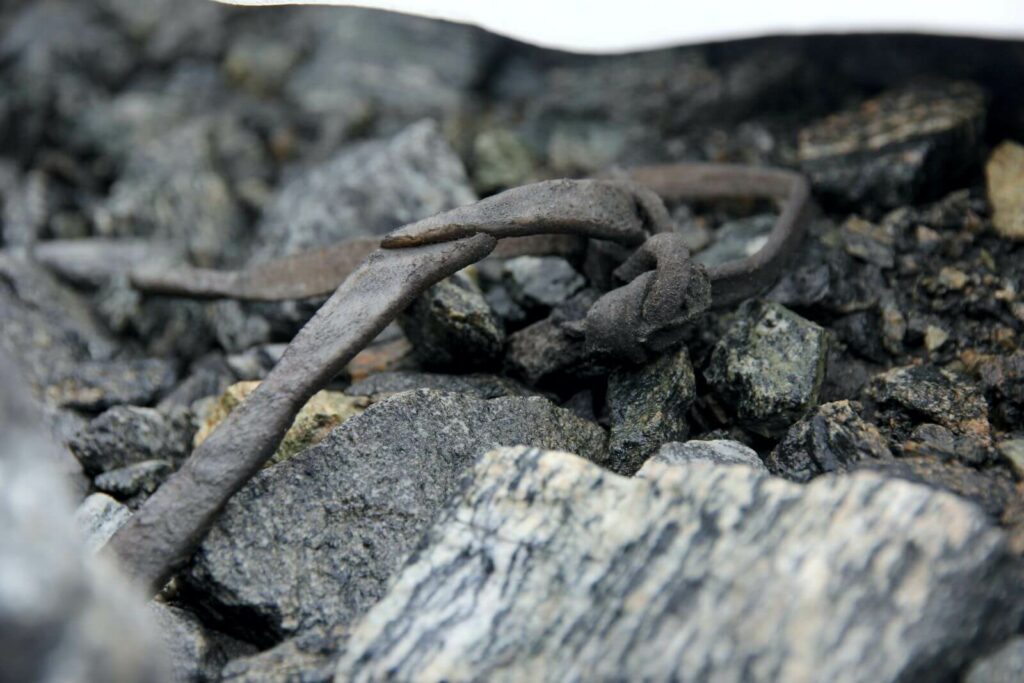
The Question of Fur on the Underside
One of the questions raised by the ski found in 2014 was whether it originally had fur on the underside. This has major implications for the use of the ski. There were no nail holes along the sides of the 2014 ski which would have been a clear sign of the fastening of the fur. However, fur can also be glued to the underside, so we could not rule it out.
A furrow on the underside along the length of the ski, as you find on other prehistoric skis (and on modern cross-country skis), would solve the question. Such a furrow would have no function with an underside covered by fur. The 2014 ski did not show a furrow, but the new and better preserved ski does! So, probably no fur-lining.
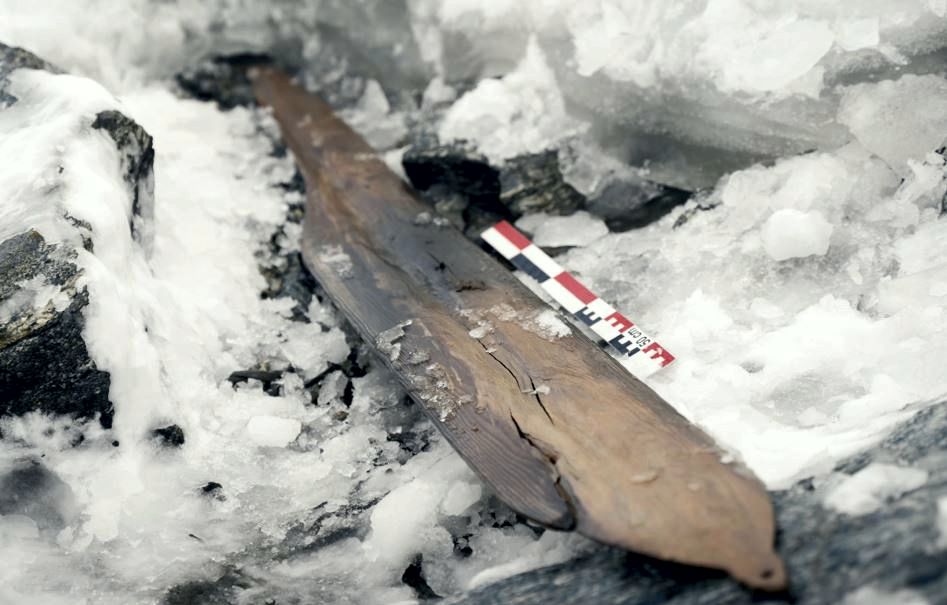
The Best-Preserved Prehistoric Pair of Skis in the World!
The skis are not identical, but we should not expect them to be. The skis are handmade, not mass-produced. They have a long and individual history of wear and repair before an Iron Age skier used them together and they ended up in the ice 1300 years ago.
Prehistoric skis with preserved bindings are exceedingly rare. In fact, when the first ski appeared in 2014, it was just the second such ski in the world. The only other example of a ski with a preserved binding is a single ski from Mänttä in Finland, which is slightly older than the one from Digervarden.
The pair of skis from the Digervarden ice patch is the best-preserved prehistoric pair of skis in the world! There are other prehistoric ski pairs, but none of them have the binding preserved. The binding is crucial. Without the binding, it is much harder to tell how the skis were used.
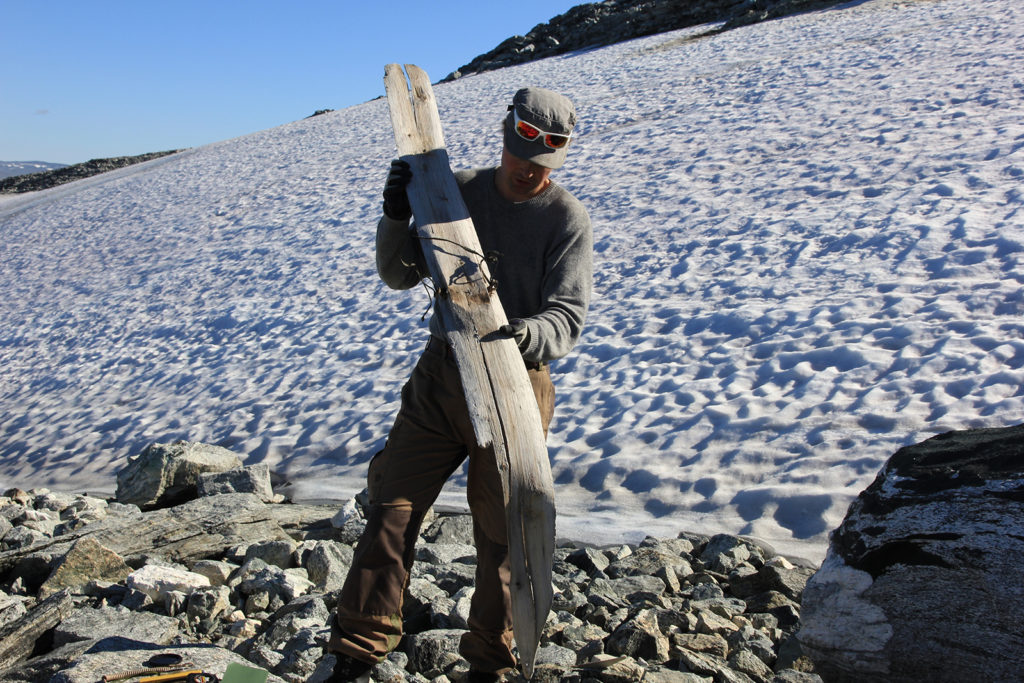
An Ancient Mountain Trail
The new ski brought an answer to the question of fur-lining that arose from the 2014 ski find. But we are no closer to answers to the two big questions that remain: who was the person who left behind the skis and what happened?
There are numerous finds from reindeer hunting at the Digervarden ice patch, both artefacts and ancient monuments. It would therefore be easy to link the skis to hunting activities. However, during the recovery of the ski, the team noted the presence of several cairns in the area. They may belong to an ancient mountain trail crossing the ice patch near the find spot of the skis. We found an 18th century sled in roughly the same area in 2016. This opens the possibility that the skis could be related to high mountain transport as well. So, we do not know whether the owner was a hunter or a traveller (or both).
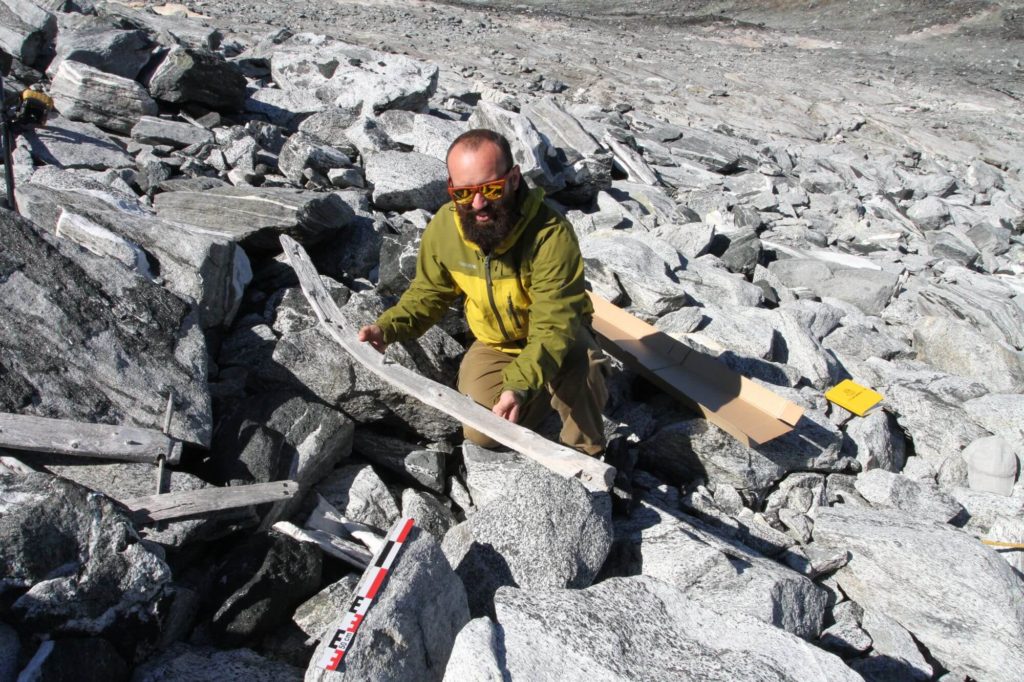
What Happened at Mount Digervarden 1,300 Years Ago?
Trying to understand what happened 1,300 years ago at Mount Digervarden remains speculation at this point. With that caveat, there are several possible scenarios. Did a hunter leave behind the skis? Maybe a sudden snowfall could have buried them beyond recovery? This is perhaps not so likely. Presumably, the hunter would have placed the skis upright in the snow to make it easy to spot them when coming back. A small avalanche could perhaps be the culprit.
Another possibility is that there was an accident. Maybe the skier fell and destroyed the toe bindings in the fall? The skis could no longer be used and were left behind. An argument against this explanation is that the skis must have had a significant value. One of them had repairs. In addition, they have holes at the front which would have made it easy to drag them behind on a rope when exiting the mountains. So why leave them behind when they could have been brought along and repaired in the lowlands?
Perhaps there was an accident that left the Iron Age skier dead or seriously injured? Is the skier still inside the ice at Mount Digervarden? This is probably hoping for too much. What we can say for sure is that we have not seen the last finds from the Digervarden ice patch. We will be back.
You can read about the first Digervarden ski and other ski finds from the ice here.
